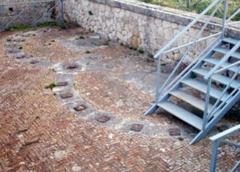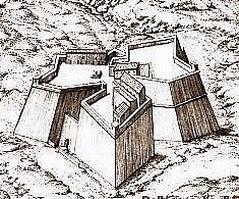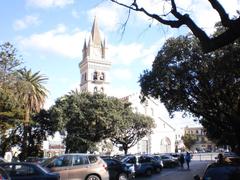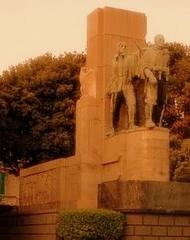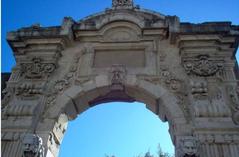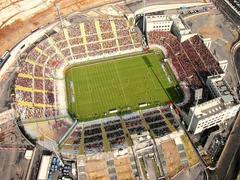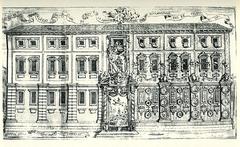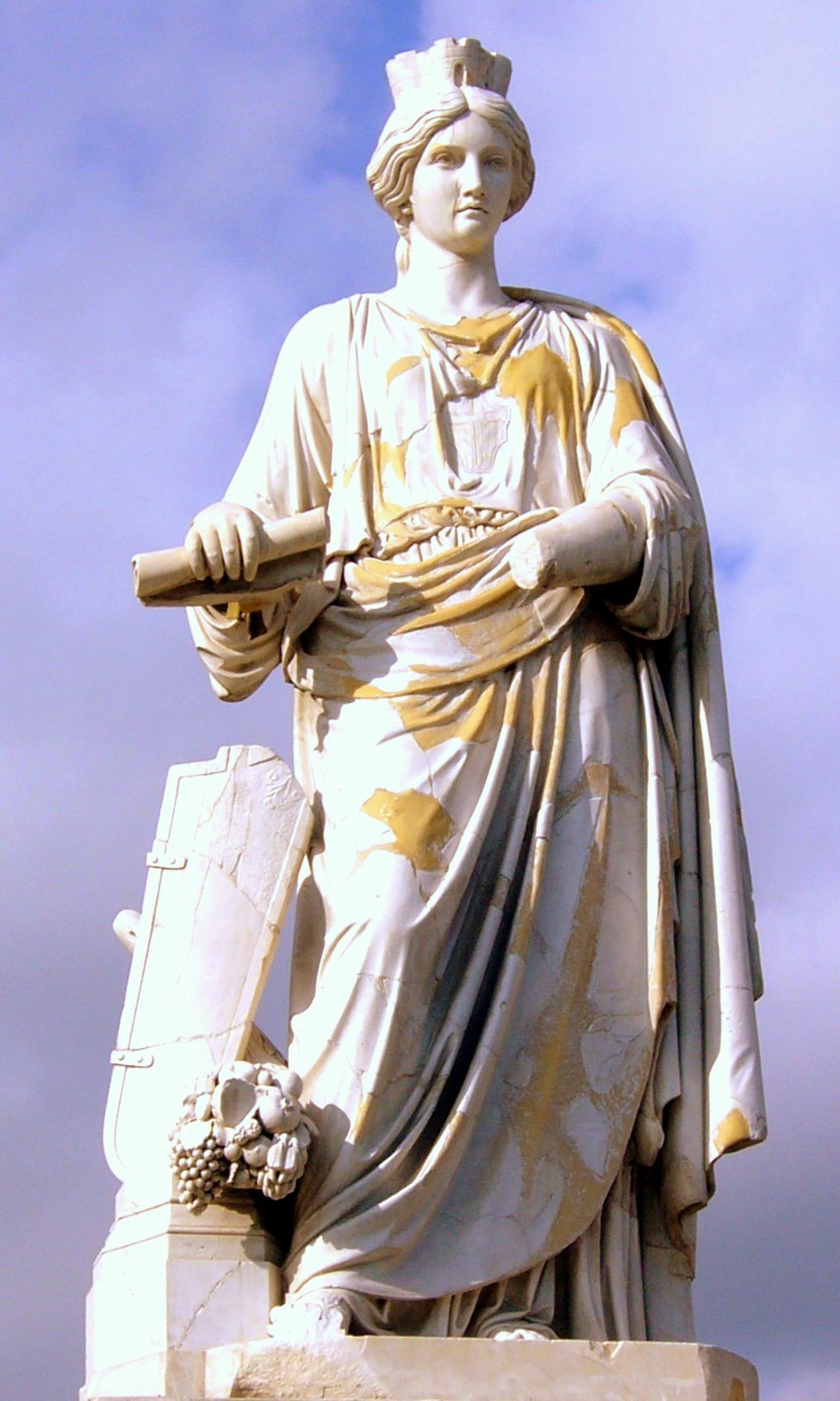
Visiting Statua di Messina: Complete Guide to Tickets, Hours, and Historical Highlights
Date: 14/06/2025
Introduction to Statua di Messina
Positioned at the gateway of Messina’s historic harbor in Sicily, the Statua di Messina—also known as the Madonna della Lettera—is more than a religious figure. It is a towering emblem of faith, resilience, and maritime tradition, greeting sailors and visitors as they approach the vibrant port city. Erected in 1934 atop a soaring votive stele, this gilded bronze statue symbolizes the legendary blessing of the Virgin Mary upon Messina, a narrative dating to the early spread of Christianity in the region. Today, the statue offers panoramic views and a tangible connection to the city’s layered heritage, encompassing Greek, Roman, Byzantine, Norman, and Baroque influences. Its central location, free public access, and proximity to other significant sites—such as the Cathedral of Messina and Forte San Salvatore—make it an essential stop for anyone exploring Sicilian history and culture (Sightseeing Experience; I Love Messina; Italia.it).
Table of Contents
- Ancient Origins and Strategic Importance
- Medieval and Early Modern Transformations
- The Statua di Messina: Symbolism and Significance
- Visitor Information: Hours, Tickets, and Accessibility
- Travel Tips and Getting There
- Nearby Attractions
- Festivals, Civic Life, and Cultural Traditions
- Practical Tips for Your Visit
- Frequently Asked Questions (FAQ)
- Conclusion
Ancient Origins and Strategic Importance
Messina’s strategic position on the northeastern tip of Sicily has shaped its destiny as a cultural and commercial crossroads. Established by Greek colonists in the 8th century BCE (then called Zancle), the city’s natural, sickle-shaped harbor quickly developed into a vital trading hub. The city’s prominence only grew under Roman rule, which saw the construction of aqueducts, theaters, and baths, many remnants of which—such as the Roman Theatre and Baths of Neptune—still evoke Messina’s ancient grandeur (Sightseeing Experience).
Medieval and Early Modern Transformations
After Rome’s decline, Messina experienced successive waves of Byzantine, Arab, and Norman control, each leaving a distinct mark on its culture and architecture. The Normans fortified the city and built the imposing Cathedral of Messina, a testament to medieval craftsmanship and resilience. The cathedral, rebuilt multiple times after earthquakes and wartime destruction, is renowned for its mix of Norman and later styles, the Golden Madonna icon, and a bell tower offering sweeping city views (Sightseeing Experience).
The 17th and 18th centuries brought a Baroque flourish, especially under Spanish rule. Architectural gems like the Church of Santissima Annunziata dei Catalani and the Fountain of Orion, a Renaissance masterpiece, highlight Messina’s status as a center of artistic innovation (Great Sicily).
The Statua di Messina: Symbolism and Significance
Madonna della Lettera
The Madonna della Lettera stands atop a 60-meter stele at the port’s entrance, blessing the city and holding the legendary “Sacra Lettera.” According to tradition, this letter was sent by the Virgin Mary to the people of Messina in 42 CE, following their conversion to Christianity by the Apostle Paul. The Latin inscription, “Vos et ipsam civitatem benedicimus” (“We bless you and the city”), at the base of the monument, commemorates this event (I Love Messina; Travel Thru History).
The statue, crafted by Tore Calabrò, was inaugurated in 1934, with a blessing relayed by Pope Pius XI via a radio system developed by Guglielmo Marconi—a symbolic fusion of faith and modern technology. It survived WWII damage and was rededicated in 1947 (Wikipedia).
Visitor Information: Hours, Tickets, and Accessibility
- Visiting Hours: The area surrounding the statue is open daily, typically from 9:00 AM to 7:00 PM. Hours may vary during festivals or special events.
- Tickets: No entrance fee; visiting the monument is free.
- Accessibility: Paved pathways provide access for most visitors, including those with limited mobility. For specific accessibility details, consult local tourist offices.
- Guided Tours: Available through city tour operators and the official tourism office, often including the statue and other historic sites (Italia.it).
Travel Tips and Getting There
- Location: San Raineri Peninsula, at the tip of Messina’s harbor.
- How to Reach: Walk (20–30 minutes from Piazza Duomo), or use local buses, taxis, or drive (limited parking at peninsula entrance).
- Best Times to Visit: Weekday mornings or late afternoons for fewer crowds and optimal photography lighting. June 3rd (Festival della Madonna della Lettera) and mid-August (Feast of the Assumption) are vibrant but busier.
Nearby Attractions
Enhance your visit by exploring these nearby highlights:
- Cathedral of Messina: Norman and Baroque architecture, astronomical clock.
- Forte San Salvatore: 16th-century fortifications near the statue.
- Fountain of Orion: Renaissance art in the city center.
- Regional Museum of Messina: Featuring Caravaggio and Antonello da Messina artworks (eternalarrival.com).
- Via Garibaldi & Corso Cavour: Lively streets with cafes and shops.
Festivals, Civic Life, and Cultural Traditions
The Madonna della Lettera is the focal point of Messina’s most important religious and civic events:
- Festival della Madonna della Lettera (June 3rd): Solemn processions and cultural festivities (Inside Messina).
- Feast of the Assumption (August 15th): The stunning Vara procession, fireworks, and communal celebrations (Digital History Unite).
Practical Tips for Your Visit
- Facilities: No restrooms or cafes at the statue; amenities are available in the city center.
- Weather: Mediterranean climate—summers are hot and dry; bring water and sun protection.
- Safety: The area is safe; remain vigilant during busy festivals.
- Photography: Sunrise and sunset offer the best light for photos.
- Souvenirs: City center shops sell religious icons, ceramics, and Sicilian sweets.
Frequently Asked Questions (FAQ)
Q: What are the visiting hours for the Statua di Messina?
A: Open daily, usually from 9:00 AM to 7:00 PM.
Q: Is there an entrance fee?
A: No, visiting the statue is free.
Q: How do I get there from Messina center?
A: Walk (about 20–30 minutes), take a bus or taxi, or drive.
Q: Are guided tours available?
A: Yes, as part of broader city tours.
Q: Is the statue accessible for people with disabilities?
A: The promenade is mostly accessible; check with local providers for specific needs.
Conclusion
The Statua di Messina stands as a luminous symbol of the city’s enduring faith and resilience, bridging centuries of history, art, and devotion. Free to visit and set amidst a panorama of ancient ruins, Baroque masterpieces, and bustling port life, the statue offers a profound experience for all travelers. To enrich your visit, consider guided tours, time your trip with major festivals, and take advantage of the city’s accessible tourism infrastructure. For updated tips and audio guides, download the Audiala app and follow local tourism channels.
Recommended Resources and Further Reading
- Sightseeing Experience – Messina’s Rich Past
- I Love Messina – Madonna della Lettera
- Italia.it – Messina
- Travel Thru History – Our Lady of the Letter
- Inside Messina – Stele della Madonna della Lettera
- Great Sicily – Exploring Messina
- VisitMe Messina – Madonnina del Porto
- Eternal Arrival – Things to Do in Messina

